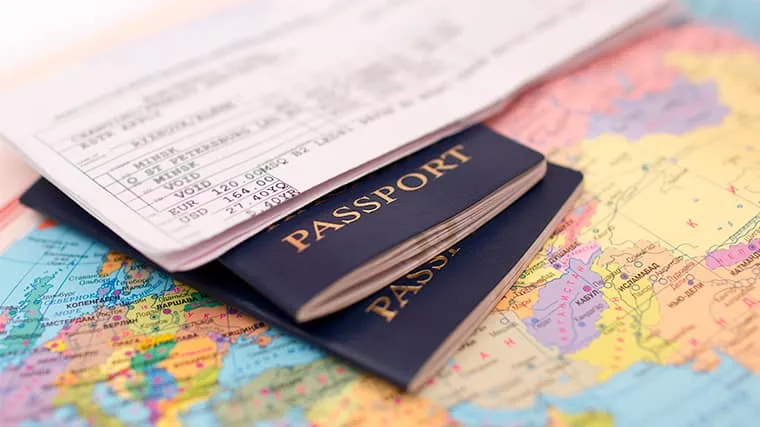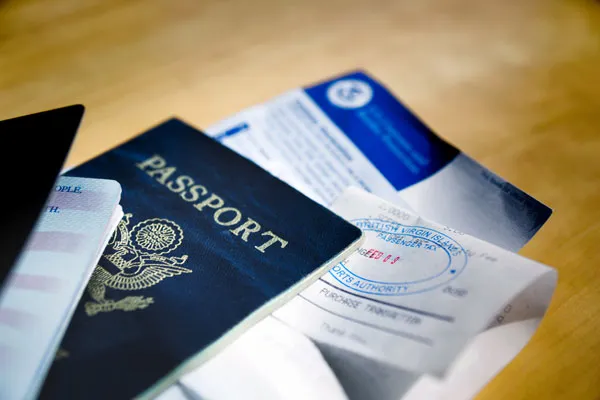Always Carry Digital and Physical Copies of Documents – Passport, visa, insurance, and ID

Always Carry Digital & Physical Copies of Documents: Passport, Visa, Insurance, and ID
Travel continues to rebound globally, and the latest developments in airport procedures, hotel check-in protocols, and cross-border verification mean that preparedness is no longer optional. This report provides an in-depth update on why carrying both digital and physical copies of essential documents — passport, visa, travel insurance, and government-issued ID — is critical for every traveler, whether for business, leisure, or emergencies. This breaking news-style advisory outlines practical steps, best practices, and quick-check lists you can adopt right away.
Why dual copies matter: the latest checks and real-world incidents
Authorities and service providers increasingly rely on digital verification alongside traditional physical checks. Recent reports show that airlines, local authorities, and some hotels now request scanned copies or screenshots of identification before arrival for contactless check-ins and pre-clearance. While digital copies can speed up processes and serve as immediate backups, physical copies remain legally recognized in many jurisdictions and are sometimes required at checkpoints where mobile devices are restricted or have no connectivity.
Digital backups reduce delays during lost-document incidents and provide a fast way to share proof with embassies, insurers, or transport operators. Conversely, physical copies act as a fail-safe when devices are low on battery, confiscated for inspection, or inaccessible due to local rules. Combining both forms is the strongest defense against travel disruption.

What documents you should duplicate and how
At minimum, prepare the following copies for every trip: a clear copy of your passport (photo and identity pages), visa pages or electronic visa receipts, proof of travel insurance with policy number and emergency contact, and a government-issued photo ID such as a driver’s license or national ID card. Where relevant, include copies of vaccination certificates, emergency contact details, and copies of itinerary receipts (flight/hotel bookings). For business travelers, carry employer authorization letters and work-specific permits if required.
Physical copies: best practices
Print high-quality copies on plain white paper, keep them in a waterproof sleeve, and store them separate from the originals. Carry one set in your main luggage and another set in a secure carry-on or a travel document organizer. Avoid folding critical pages; instead, use a slim folder or envelope. If traveling in groups or with family, have a dedicated document pack for shared reservations and emergency contacts.
Digital copies: secure storage and accessibility
For digital copies, use multiple secure storage methods: encrypted cloud storage (with two-factor authentication), an encrypted USB or hardware token kept separately, and offline encrypted files stored on your phone behind a secure app or password manager. Avoid sending copies via unsecured email or public chat apps. Maintain an offline screenshot of key pages and a PDF version with password protection. Label files clearly (for example: passport-name-country.pdf) to streamline sharing with consular services or insurers.
Legal, consular, and insurer procedures: what to expect
If your documents are lost or stolen, consulate and embassy processes often require copies for identity verification before issuing emergency travel documents. Travel insurers will frequently request scanned proof to validate claims. This article’s latest update recommends you pre-upload scanned documents to your insurer’s secure portal when possible, and keep emergency contact numbers printed and saved offline. Having both forms of proof reduces processing time and simplifies emergency assistance requests.
Emergency checklist: immediate actions if documents are lost
Step 1: Use your digital copy to contact your airline, hotel, or local authorities. Step 2: Notify local police and obtain a report if required. Step 3: Contact your country’s nearest embassy or consulate; present the digital or printed copy for faster assistance. Step 4: Call your travel insurance helpline and provide the scanned copies and incident report. Step 5: If necessary, arrange for emergency travel documentation or temporary permits per consular guidance.
Privacy and security: balance convenience with protection
While sharing copies can expedite aid, it also raises privacy concerns. Use trusted and encrypted services when storing or transmitting identification. Redact non-essential details from copies you share publicly or on booking platforms — show only the necessary fields. Use a password manager to store login credentials for cloud backups, enable device-level encryption, and always sign out of public devices. When sharing with third parties, confirm their data-handling practices to avoid identity exposure.
Tools and apps recommended for travelers
Use reputable password managers for storing encrypted notes and documents. Consider dedicated travel apps that offer secure document vaults, and enable two-step verification wherever possible. Keep one small, printed emergency card with essential numbers and brief instructions in the local language if traveling to regions with limited English support.
Final preparedness tips for fast, hassle-free travel
Before departure, create a small document pack: two printed sets, labeled encrypted digital files, and offline screenshots on your phone. Share a set of digital copies with a trusted emergency contact at home. Test your ability to access cloud backups while offline (airplane mode with Wi-Fi, or via downloaded files). Periodically update your copies following renewals, renewals of visas, or policy changes.
The latest travel advisories and breaking updates emphasize redundancy and foresight. Following this report’s recommendations will reduce stress, speed up emergency responses, and ensure you can continue your journey with minimal disruption when the unexpected happens.
Comment / Reply From
No comments yet. Be the first to comment!







